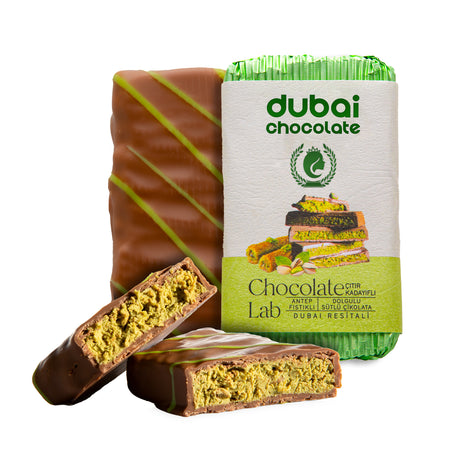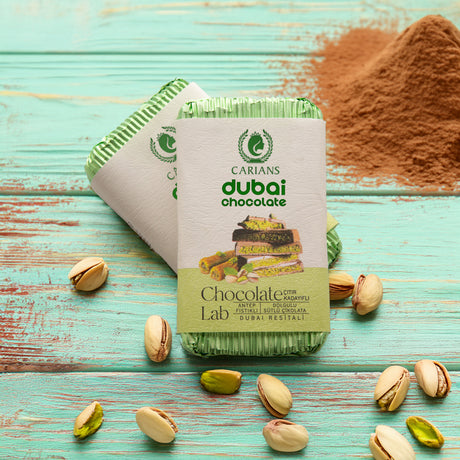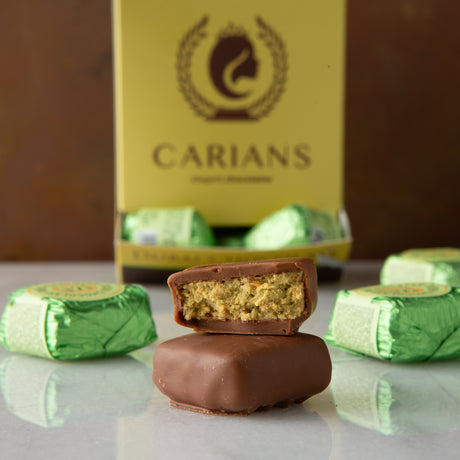Chocolate is everyone's favorite, available in many forms and flavors. Among the most popular are white chocolate, milk chocolate, and dark chocolate. Each has its characteristics, flavors, and composition. Let's explore the world of chocolate and discover the secrets behind its different types, especially as it relates to making the perfect chocolate gift box.
The Base: Chocolate Liquor
All chocolate starts with chocolate liquor, also known as unsweetened chocolate. This thick paste is made from finely ground cacao nibs, the inner part of the cocoa bean. It's important to note that the production of chocolate can have ethical and environmental implications. For example, some chocolate is produced using child labor, and the cultivation of cocoa can lead to deforestation. Chocolate liquor is 100% cocoa and is the base for all types of chocolate. Note that despite its name, chocolate liquor has no alcohol. When pressure is applied to chocolate liquor, it separates into cocoa butter and cocoa powder.
White Chocolate: A Creamy Treat
Due to its composition, white chocolate stands out with its ivory or cream color. Made from sugar, cocoa butter, milk, vanilla, and lecithin, white chocolate is known for its sweet, creamy texture and vanilla flavor. Unlike other chocolates, it has no cocoa solids responsible for the chocolatey flavor and dark color of milk and dark chocolates.
The U.S. Food and Drug Administration (FDA) requires that white chocolate be classified as such with at least 20% cocoa butter, 14% milk, and no more than 55% sugar. Due to its cocoa butter content, high-quality white chocolate will have a smooth, rich texture. However, some products labeled as white chocolate may use other vegetable fats instead of cocoa butter, which do not meet the FDA's definition and are generally of lower quality.
If stored properly, white chocolate has a shelf life of about four months. To ensure its quality, store it in a cool, dry place away from direct sunlight and strong odors. Its creamy texture and sweet flavor make it a versatile ingredient in cooking and baking. Whether decorating cakes, making ganache, or eating it as a treat, white chocolate can add a subtle richness to any recipe.
Milk Chocolate: The Classic
Milk chocolate, with its comforting light brown color, creamy texture, and sweet flavor, is perhaps the most popular type. It combines chocolate liquor with sugar, milk, and sometimes an emulsifier like soy lecithin to enhance smoothness. According to the FDA, milk chocolate must have at least 10% chocolate liquor and 12% milk, providing a familiar and reassuring taste experience.
The flavor profile of milk chocolate is sweet and chocolatey with hints of caramelized sugar and vanilla. It's softer than dark chocolate but firmer than white chocolate. When stored properly, milk chocolate can last up to 16 months. Its versatility makes it a popular choice for both eating and baking. It adds a mild chocolate flavor to recipes, perfect for treats like chocolate waffles.
Dark Chocolate: Intense and Bold
Dark chocolate is a favorite among chocolate lovers with its deep brown color and robust flavor. Made from chocolate liquor and sugar, it's often called black or semisweet chocolate. Dark chocolate is less sweet than milk chocolate and doesn't contain added dairy, so it's vegan-friendly.
The FDA requires dark chocolate to have at least 15% chocolate liquor, but high-quality dark chocolates often have a much higher percentage. This high cocoa content gives dark chocolate its firm texture and a distinct snap when broken. The flavor can vary widely, with notes of baked brownies, red fruit, and brown spices like cinnamon.
Dark chocolate's popularity has grown not only for its intense flavor but also for its health benefits. Rich in antioxidants, it's a healthier snack option. It also has a long shelf life and lasts about 20 months if stored properly. Its intense flavor makes it perfect for baking recipes that require a strong chocolate presence, like brownies and chocolate bourbon maple pecan pie, keeping you informed and health-conscious.
Bittersweet Chocolate: The Darker Side
Bittersweet chocolate, often called extra-dark chocolate, is loved for its high cocoa content and complex flavor profile. According to the FDA, bittersweet and semisweet chocolates must have at least 35% chocolate liquor, but bittersweet chocolates usually have 66% or higher. This makes it more bitter than semisweet with a deep, rich flavor.
The flavor of bittersweet chocolate can vary depending on the origin of the cacao beans. Some may have fruity or earthy notes, while others taste like baked brownies brownies. Bittersweet chocolate is interchangeable with semisweet chocolate in baking, depending on your preference for sweetness and intensity. It has a shelf life of about 20 months and is perfect for recipes like chocolate chip cookies or molten chocolate cakes.
Cocoa Powder: Baking Essential
Cocoa powder is made by separating chocolate liquor into cocoa butter and cocoa solids and then crushing the solids into a fine powder. It comes in two types: natural cocoa and Dutch-processed cocoa. Natural cocoa is lighter in color and has a solid, acidic chocolate flavor. Dutch-processed cocoa is treated to neutralize the acidity, resulting in a milder flavor and darker color.
Cocoa powder is a baking essential. It adds rich chocolate flavor to cakes, cookies, and other desserts. Dutch-processed cocoa is often used for making hot chocolate as it blends easily with liquids. Stored properly, cocoa powder can last about 18 months.
Ruby Chocolate: The Newcomer
The newest addition to the chocolate family was Ruby chocolate, discovered in 2017 by Belgian chocolate maker Barry Callebaut. Its red-pink color comes from ruby cocoa beans grown in Ecuador, Brazil, and the Ivory Coast. Ruby chocolate has a unique flavor and intense fruitiness with fresh sour notes.
It contains ruby chocolate, 47.5% cacao, and 26.3% milk. The FDA has yet to define ruby cit as a new introduction. Ruby chocolate is already famous for creating bright, fruit-forward treats and colorful confections. Stored properly, ruby chocolate has a shelf life of about 12 months.
Building the Perfect Chocolate Gift Box
When building the perfect chocolate gift box, variety is the key. Include a mix of white, milk, dark, and even ruby chocolate, so there's something for everyone. Each type of chocolate has its unique flavors and textures, making the gift box an exciting and diverse treat.
White chocolate adds a creamy, sweet element, perfect for those who like a milder chocolate experience. Milk chocolate is classic and familiar and will please most palates. Dark chocolate is rich and intense for those who prefer more robust chocolate. Ruby chocolate adds a pop of color and a unique fruity flavor that's both fun and delicious.
Now that you know the characteristics and composition of each chocolate, you can build a chocolate gift box that looks good and tastes great. Whether you're gifting or self-indulging, a curated chocolate gift box is a great way to experience the many faces of chocolate.

















